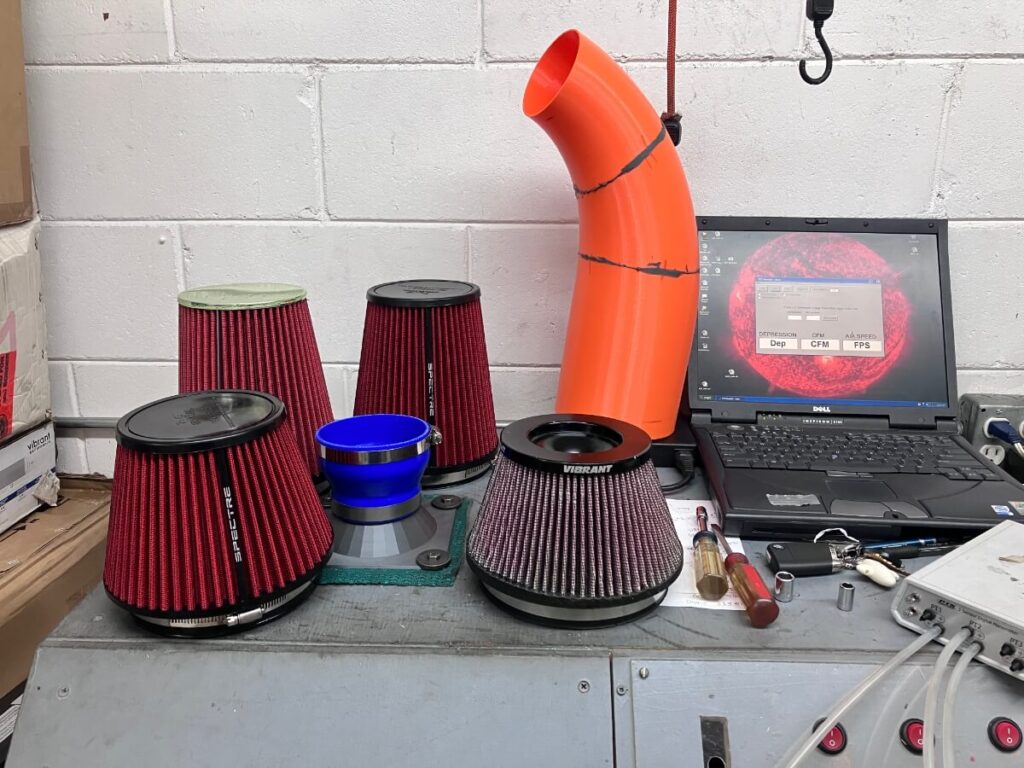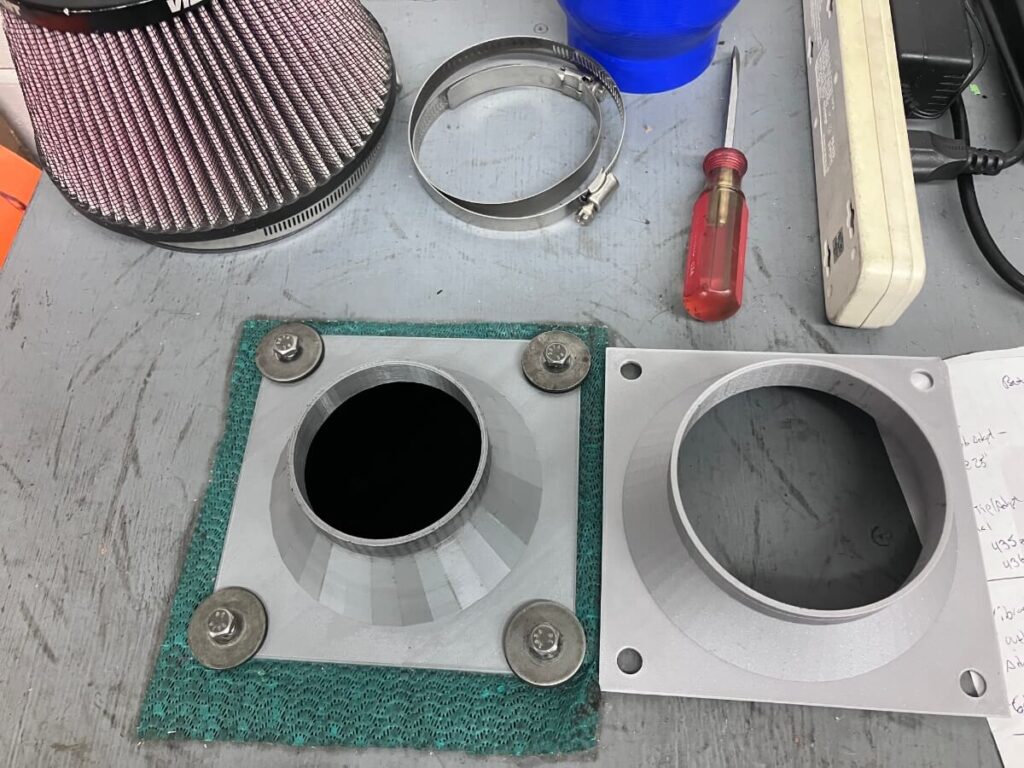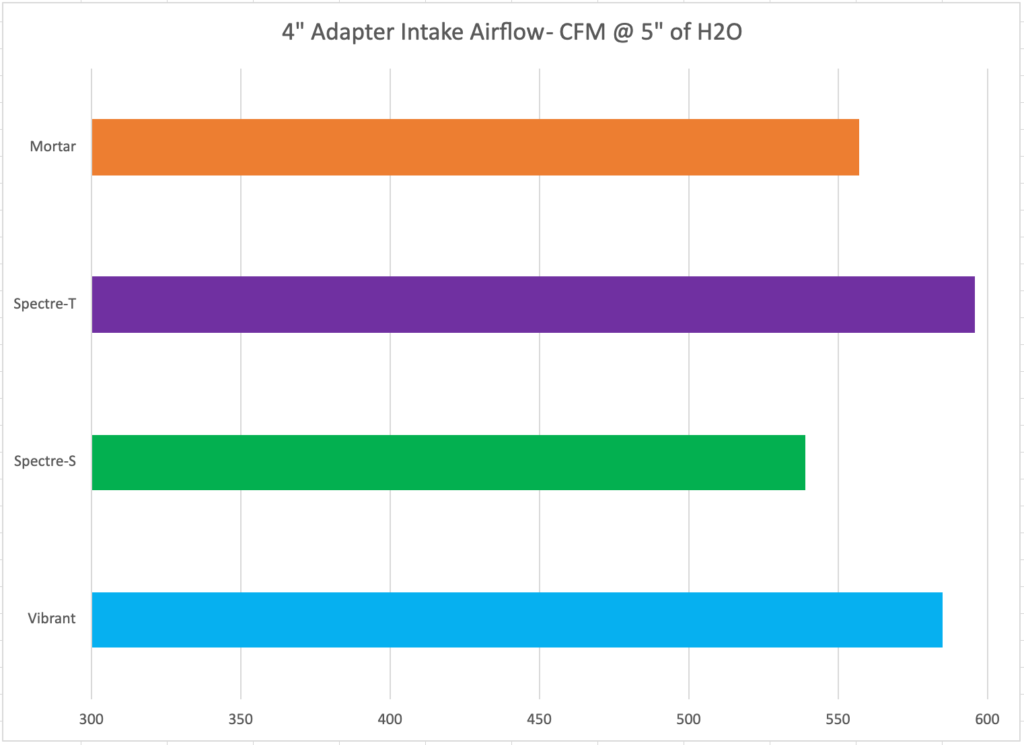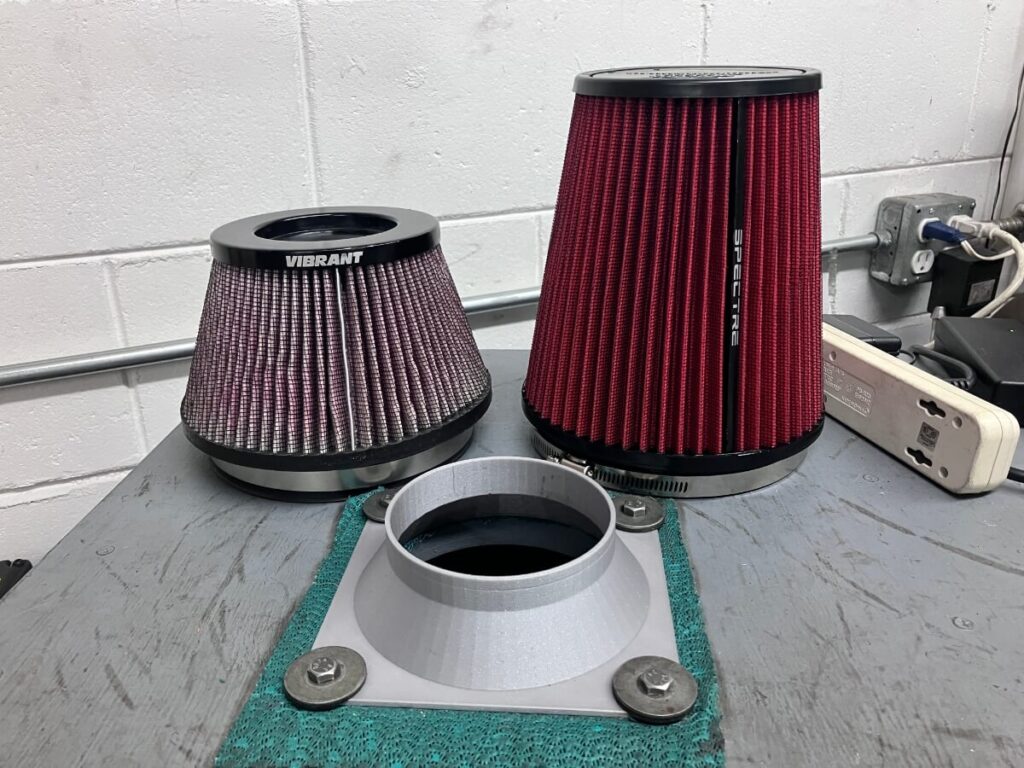Table of Contents
Background:
For the past several months I have been working on a design for an intake and when testing the flow rate through the prototypes I have relied on a Vibrant air filter to attach to the intake.
A logical question is whether or not this is a good air filter to use, especially since the design thus far has been accommodating the dimensions of this Virbant air filter.
I decided I would sample a few other air filter options to see how the flow rate through them compared with the Vibrant air filter.

Products under test:
To minimize the effect that the intake has on the flow rate through the air filter I designed an intake tube that is 6″ in diameter to match the flange of the air filters. The tube tapers to 4″, after which a silicone coupler tapers it further to 3″ to attach to the flow bench.
More will be said about this intake tube in a future post about the Beta 4 design.
Filters used for this comparison are:
- Vibrant 6″ flange and 5.3″ height
- Spectre Universal 6″ flange and 8.5″ height
- Mortar 6″ flange and 8″ height
- Spectre Universal 6″ flange and 6.2″ height
Test Procedure:
Two series of tests were conducted with a major change being a swap of the adapter to the flow bench.
The first series was performed using a 3″ adapter, and the second series was a 4″ adapter.

After running the tests with the 3″ adapter I decided this part was likely limiting airflow to an extent, and this could be addressed by using the 4″ adapter.
I don’t have a 4″ silicone coupler so I improvised using an elastic band to seal the inlet tube to the adapter. This made it necessary to hold the intake in place during the testing,

Consequently, the photographs are of the 3″ inlet test since the coupler can support the intake and I was freed up to take a picture of the filters attached to the intake.
The air filters are attached to the intake tube and then the tube is joined to the flow bench using an adapter and silicone hose, or the elastic band.
The tests using the 4″ adapter were made at a depression of 5″ of H2O.
This is a very low-pressure differential and indicates just how small the resistance of these filters is.




Air Filter Flow Test Results:
The airflow rates for each of the filters at 5″ of H2O are:
- Mortar – 557 CFM
- Spectre-S – 539 CFM
- Spectre-T – 596 CFM
- Vibrant – 585 CFM
These values are compared on the chart below:

The two top-flowing filters are the Vibrant and Spectre Tall.

A notable difference is between the Spectre Tall and Mortar filters. The two are very similar in size yet the Spectre picks up 39 CFM (7%) over the Mortar
Conclusions:
A sampling of aftermarket air filters was flow tested to evaluate if there are significant differences between the flow rates of different designs using a 6″ diameter flange.
Overall the greatest difference showed ~11% more airflow, and between similar sized products a 7% increase in airflow was measured.
Amongst these products, the Spectre Tall air filter supported the highest airflow rate, 596 CFM @ 5″ of H2O.
The flow rate through the Vibrant filter was slightly less the the Spectre Tall, down by 11 CFM, indicating the Vibrant has not been a “bad” filter to use during the testing of the MGM7 intake prototypes.
